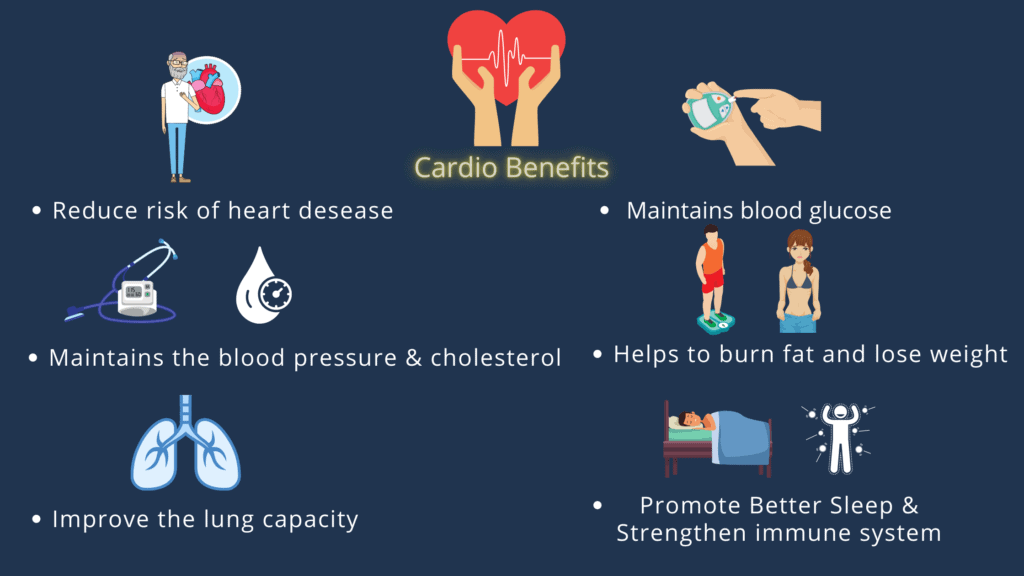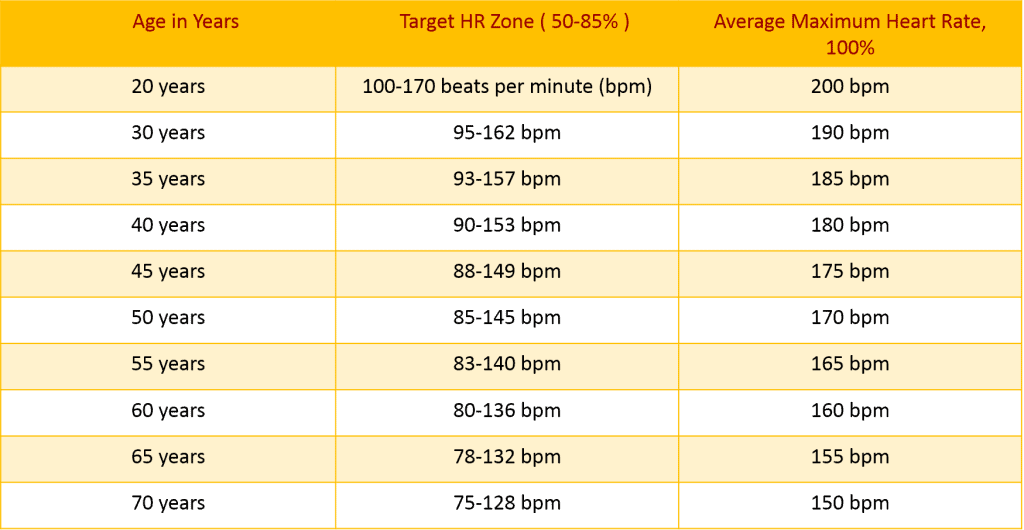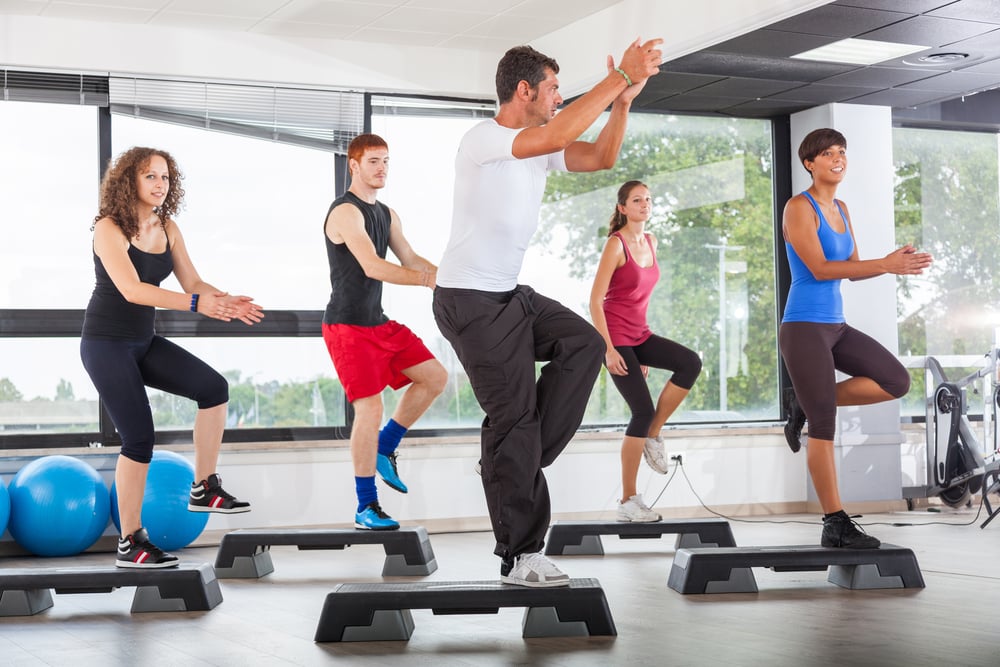People have love hate relationship with Cardio. Some people like doing cardio, whereas others don’t. Well the primary reason behind this is the lack of proper knowledge about cardio and the huge health benefits it brings if done correctly.
Confused ? Don’t worry, In this Cardio workout guide we are going to talk about the basics which will answer all your questions and will help choose the right type of cardio for your fitness goal.
What is Cardiovascular Workout ?
Before we talk about cardio workout, let us first understand what exactly is called Cardio ?
Well, Cardiovascular also known as Cardio, is a biological state when the heart rate is more than the normal. Let’s understand, for a healthy person the normal heart bit is 70-75 bits/min.
Cardio exercise uses large muscle movement over a sustained period of time keeping your heart rate to at least 50% of its maximum level
How Much Cardio Should You Do ?
As per the Physical Activity Guidelines issued by the U.S. Department of Health and Human Services, Adults should do at least 150 minutes to 300 minutes a week of moderate-intensity or 75 minutes to 150 minutes a week of vigorous-intensity aerobic physical activity.
If you break it down to daily, then it would be like 30 minutes – 1 hour of moderate-intensity or 15-30 minutes of vigorous-intensity aerobic physical activity.
Health Benefits of Cardio Workout
As per the Physical Activity Guidelines issued by the U.S. Department of Health and Human Services, Adults should do at least 150 minutes to 300 minutes a week of moderate-intensity or 75 minutes to 150 minutes a week of vigorous-intensity aerobic physical activity.
If you break it down to daily, then it would be like 30 minutes – 1 hour of moderate-intensity or 15-30 minutes of vigorous-intensity aerobic physical activity.

Let’s understand, whenever we perform any sort of physical activity, the heart rate goes up and it starts pumping more blood to the cells in our body.
This enables our cells to burn more fat during both exercise and inactivity. Your heart is a muscle and working out this muscle, makes it strong which in turn helps improve your overall Cardiovascular health.
Some of the Key Benefits of Cardio Workouts are as follows
- Increase cardiovascular endurance and reduce risk of heart disease.
- Helps reduce the blood pressure and cholesterol.
- Improve the lung capacity.
- Reduce risk of risk of stroke and Alzheimer’s disease.
- Improves the thinking ability.
- Maintenance blood glucose level and reduce the risk of developing type-2 diabetes.
- Improve sex life
- Promote Better Sleep
- Helps to burn fat and lose weight.
- Strengthen immune system.
Maximum Heart rate calculation
Before starting any form of cardio, you should know your max heart rate. So how to calculate that. There is a general formula that is used to calculate the maximum heart rate of a person.
Max Heart rate Formula: 220 – Your Age
So if your age is 40, then your max heart rate would be around 220 – 40 = 180 heart beats per minute, that would be full physical exertion like sprinting all out.
The American Heart Association (AHA) recommends people to target for reaching between 50% and 85% of their maximum heart rate during exercise. Below is a simple table that shows the maximum and ideal heart rate according to age.

Types of Cardio Workouts
There are mainly 4 different forms of Cardio. Each one of them has its own benefits. Beginners should start slow with low intensity and as the fitness level increases they can do more of high intensity cardio.
-
- Steady state Cardio Training
- Interval Training
- Circuit Training
- HIIT Training
Steady State Cardio Training
Any workout that increases your heart rate above 50-70 % continuously for a sustained period of time is called low-intensity or steady state Cardio.
The example of steady state cardio could be walking or jogging at a constant pace for specific distance or duration.
Steady state cardio could be great for muscle recovery, and can be extremely ben
Interval Training
This type of training would be like walking for 3 minutes and jogging for 30 seconds. And repeating this cycle for a specific time period. These type training could be helpful for increasing cardiovascular endurance.
Studies have shown that regular interval training can help lose more fat and burn more calories.
Circuit Training
You can do circuit training combining strength exercises with cardio based exercise. For instance 4 exercises, side to side hops, side dumbbell raises, lunges and pushups.
You can take complete rest between the exercises or do the complete circuit, take rest and do the circuit again. This is a great way to combine strength and cardio training together.
HIIT Training
More advanced fitness person you can consider High intensity interval training often called HIIT. An example of this would be to sprint for 30 seconds and then walk for 30 seconds and repeat this cycle for say about.
This would be like 1 to 1 ratio meaning sprinting for 30 second and walking for 30 seconds. Some athletes also prefer to do HIIT with a 2 to 1 ratio, meaning sprinting for 30 second and then walking for 15 second.
There is no set and stone way of doing HIIT. So you can do it to whatever suits your level of fitness.
Which type of Cardio is good for me ??
At the end of the day it all depends on your level of fitness and fitness goals. If you are a beginner, it’s always recommended that you start slow with one form of cardio that you can do regularly and as your fitness level increases gradually try other forms of cardio.
If your fitness goal is to lose weight or just burn the stubborn belly fat then you should probably consider doing sprinting and then slowly move to HIIT once your fitness level increases. Similarly if your goal is just to stay active and maintain good cardiovascular health, then you may consider doing steady state cardio more often for a longer period of time.
And if your goal is to build muscle at the same time and increase cardiovascular endurance then your Circuit training could be a great option for you. As in circuit training both the strength and cardio can be combined together in one circuit which helps build muscle strength and improves cardiovascular health.
